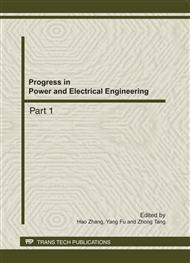p.722
p.726
p.732
p.739
p.744
p.753
p.759
p.766
p.773
Optimal Piping Design for Enhanced Energy Saving in District Cooling System – A Case Study
Abstract:
This study performs a numerical investigation into the power consumption characteristics of various primary-secondary chilled water circuit designs in a district cooling system (DCS) installed in six buildings located within the same block in Taipei, Taiwan. An E20-II model is created of the DCS and a series of simulations are performed to determine the primary-secondary chilled water piping design which maximizes the energy saving obtained in the DCS over the course of a typical year. It is shown that the use of a region-pumping system or a boost-pumping system reduces the power consumption of the secondary chilled water circuit by 26.5% and 29.9%, respectively, compared to that of a common-pumping system. In addition, the results show that for a practical chilled water system in which the temperature differential on the primary side is 5.0oC while that on the secondary side is 6.5oC, an average monthly energy saving of around 5~7% is obtained compared to a DCS with equal temperature differentials in the primary-secondary circuits provided that the flow rate and the temperature differential of the chilled water in the primary circuit are a little less than those in the secondary circuit.
Info:
Periodical:
Pages:
744-752
Citation:
Online since:
October 2011
Price:
Сopyright:
© 2012 Trans Tech Publications Ltd. All Rights Reserved
Share:
Citation:


